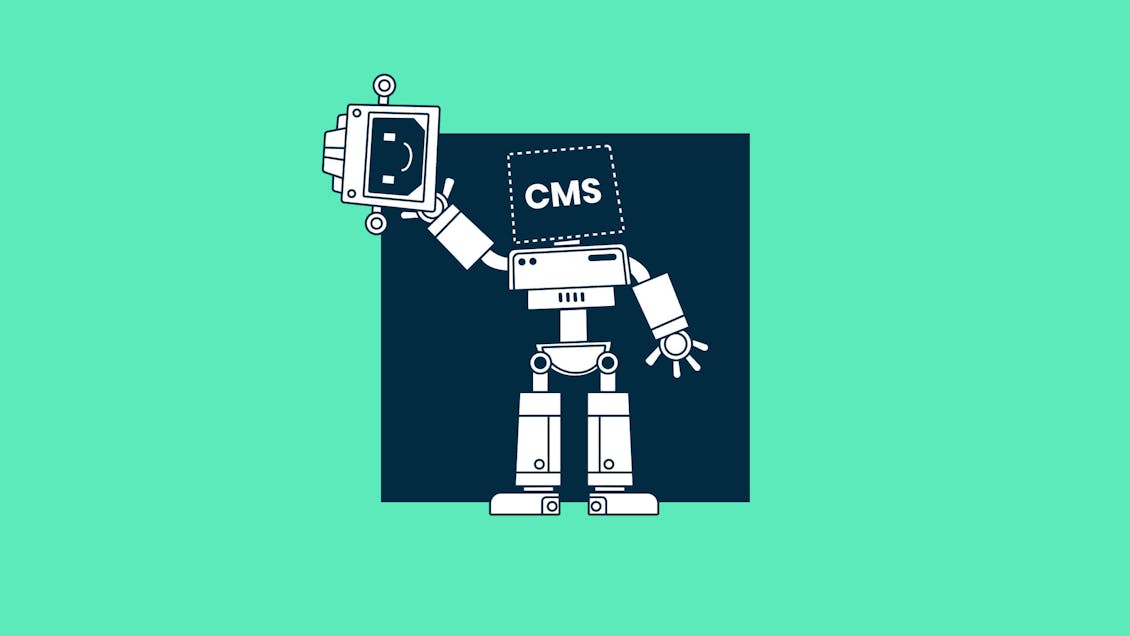The future of Content Management Systems is here — and it’s “headless”

Why choose a headless CMS today?
If you’re in the business of publishing content (and who isn’t these days?), the choice of a content management system (CMS) is probably one of the most important ones you’ll make.
Traditionally, platforms like Drupal or WordPress have been the go-to choice for many content publishers. While these platforms have stood the test of time and helped countless companies grow, they have one critical flaw: They’re just not flexible.
They run on technologies like PHP, which tightly couples your content with how it’s presented. They bank solely on “server side rendering.” And content is primarily stored as HTML in a relational database, making it difficult to reuse and repurpose content across different platforms and channels.
This wasn’t actually a bad thing… more than a decade ago. But in a multi-modal, multi-channel digital environment, traditional, monolithic CMS platforms are becoming dinosaurs.
There’s a new world order now, one that calls for more robust and flexible content publishing capabilities, allowing businesses to de-couple their content from the design and make it available to easily and seamlessly publish and update across any channel or device.
Enter the “headless CMS.”
What is a headless CMS and what are the benefits?
A headless content management system is a back-end only content platform built from the ground up to store, manage, and deliver content via APIs — think RESTful or GraphQL — to be consumed on any front-end device or interface.
It’s cloud-hosted, lighter, and focuses primarily on content creation through an intuitive user interface. The goal is simple: let content creators do what they do best without wrestling with templates, plugins, or database quirks.
To appreciate what makes headless CMS such a game changer, let’s reflect on how content consumption has evolved.
Not long ago, building a website that worked on mobile was considered innovative. Today, we’re delivering content across smartwatches, voice assistants, digital kiosks, and AR/VR platforms — and audiences expect real-time, personalized, and device-optimized experiences. That’s just not something a traditional CMS was ever built to do.
In contrast, headless CMS empowers you to serve the same content — consistently and securely — across mobile apps, websites, OTT platforms, digital signage, and more, all from one centralized source.
Welcome to the API-powered era
You’ve gone from being a content company to a data company. Your users have changed, your content is more dynamic, and your publishing needs are more complex than ever. How do you manage this?
With APIs.
APIs are now the universal communication standard — from checking the weather on your phone to syncing your calendar across devices. So it makes perfect sense to expose your content via APIs as well.
The beauty of a headless CMS is that the APIs are already built in.
Say you're working with a vendor building a mobile app. Simply provide an access key, and that vendor can pull structured content directly from your CMS using its API. Want to notify them whenever new content goes live? Just configure your CMS to ping their server in real time.
Want to revoke access? Change or delete their access key. Easy. No drama.
Key considerations when choosing a headless CMS
While a headless CMS can unlock huge opportunities, it also comes with trade-offs. Here’s what to keep in mind:
1. Subscription-based pricing
Headless CMS platforms are typically SaaS-based, meaning you’ll pay a monthly subscription fee. Depending on your needs, this could range from a few hundred to over a thousand dollars a month. Factor this into your budgeting and scaling strategy.
2. Migration effort
Moving from a traditional CMS like WordPress to a headless platform isn’t a lift-and-shift operation. You’ll need to extract, transform, and map content into the new CMS’s schema — often requiring custom scripts and developer time. If you lack a strong engineering team, this can get complex, fast.
3. No plug-ins (Which is both good and bad)
Security-conscious? Great — no plugins means fewer vulnerabilities. But it also means fewer out-of-the-box features. Need search functionality, localization, or content previews? You’ll likely need to build or integrate those features yourself.
4. Choose a component-based CMS
Not all headless CMSs are created equal. Look for one that offers a component-based data model, enabling you to structure content in flexible, reusable blocks. These are the types of solutions we use in our Composable Frontend Engineering practice. They make it easier to support multiple presentation layers (e.g., web, mobile, OTT) from a single content source.
In conclusion…
Adopting a headless CMS isn’t just a tech upgrade — it’s a strategic shift.
It requires thoughtful evaluation of your content strategy, tech stack, internal capabilities, and long-term goals. But if you’re looking to grow in a landscape that demands flexibility, personalization, and omnichannel delivery, the move to a headless CMS isn’t a matter of “if,” but “when.”
Welcome to the future of content publishing.



